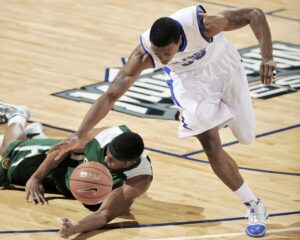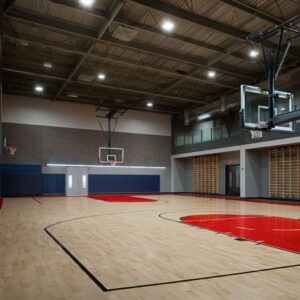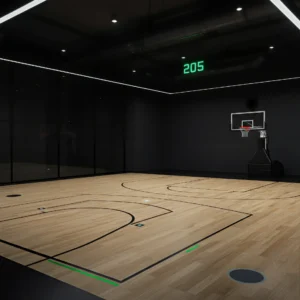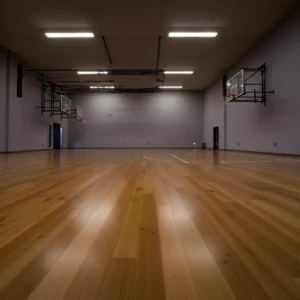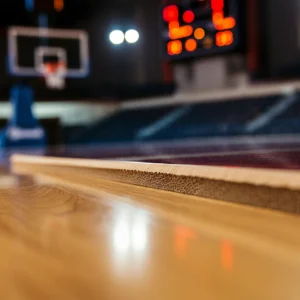Pickleball has quickly risen from a niche pastime to one of the fastest-growing sports worldwide. Its popularity has placed increasing demands on sports facility managers, pickleball enthusiasts, and court builders to ensure optimal playing conditions. A critical factor in providing the ideal playing experience is selecting the right court surface material. From durability to maintenance and impact on gameplay, the material you choose matters.
This blog will explore the top five materials for pickleball court surfaces, analyzing their pros and cons, durability, maintenance needs, and sustainability. Whether you’re a builder, a facility manager, or someone embarking on a DIY pickleball court project, this guide will help you make an informed decision.
1. Asphalt
Overview
Asphalt is one of the most commonly used materials for outdoor pickleball courts. Known for its durability and cost-effectiveness, asphalt’s popularity stems from its smooth surface and suitability for recreational sports.
Pros
- Durability: Asphalt courts handle frequent use and seasonal weather changes well, making them ideal for outdoor sports facilities.
- Cost-Effective: The material offers a relatively low upfront installation cost compared to other alternatives like synthetic turf.
- Smooth Surface: Provides an even bounce, enhancing gameplay consistency.
- Quick Installation: Asphalt courts can be installed relatively quickly, making it a time-efficient choice for court builders.
Cons
- Maintenance: Over time, asphalt may develop cracks due to exposure to UV rays and moisture, requiring regular repair.
- Surface Hardness: While durable, asphalt’s hardness can increase the risk of physical strain for players, especially during extended gameplay.
- Lifespan Limitations: Its longevity depends significantly on proper maintenance and sealing.
Best For
Outdoor sports facilities in moderate climates where short-term affordability is a priority.
2. Concrete
Overview
Concrete is widely regarded as a premium material for pickleball court surfaces due to its unparalleled durability and smooth finish. Ideal for both indoor and outdoor courts, it is an excellent choice for long-term investment.
Pros
- High Durability: Properly maintained concrete courts can last several decades, making them highly cost-effective over time.
- Low Maintenance: Unlike asphalt, concrete requires less frequent upkeep once installed.
- Versatile Surface: Offers an even and consistent playing surface, enhancing gameplay accuracy.
- Customization Options: Concrete courts can be color-coated and custom-textured to improve aesthetics and performance.
Cons
- High Initial Cost: Installation costs for concrete can be steep, potentially deterring small-scale or DIY builders.
- Surface Hardness: Similar to asphalt, concrete can be hard on players, and additional cushioning layers may be needed for comfort.
- Cracking Risks: Natural ground movements can lead to cracks over time, requiring repairs for optimal gameplay.
Best For
Professional-grade pickleball courts or sports facilities aiming for long-term durability.
3. Plastic Modular Tiles
Overview
Plastic modular tiles are lightweight, interlocking panels that provide a portable and customizable pickleball surface. These are increasingly favored for their versatility and quick installation.
Pros
- Rapid Installation: Modular tiles can be installed and dismantled in just hours, making them a flexible option for multipurpose venues.
- Player Comfort: Many tiles incorporate shock-absorption technology, reducing stress on players’ joints during gameplay.
- Low Maintenance: Resistant to cracking, warping, and moisture damage, requiring less frequent upkeep.
- Customizable Design: Available in various colors and patterns to meet specific aesthetic and functional needs.
Cons
- Higher Upfront Cost: While cost-efficient in the long term, upfront costs for modular tiles can be higher compared to asphalt or concrete.
- Less Authentic Bounce: The textured surface of modular tiles may slightly alter ball behavior, making it less similar to traditional court materials.
- Limited Weather Resistance: Extreme heat or cold may potentially warp or affect the lifespan of certain tile systems.
Best For
Temporary courts, indoor facilities, or areas requiring versatile, multipurpose surfaces.
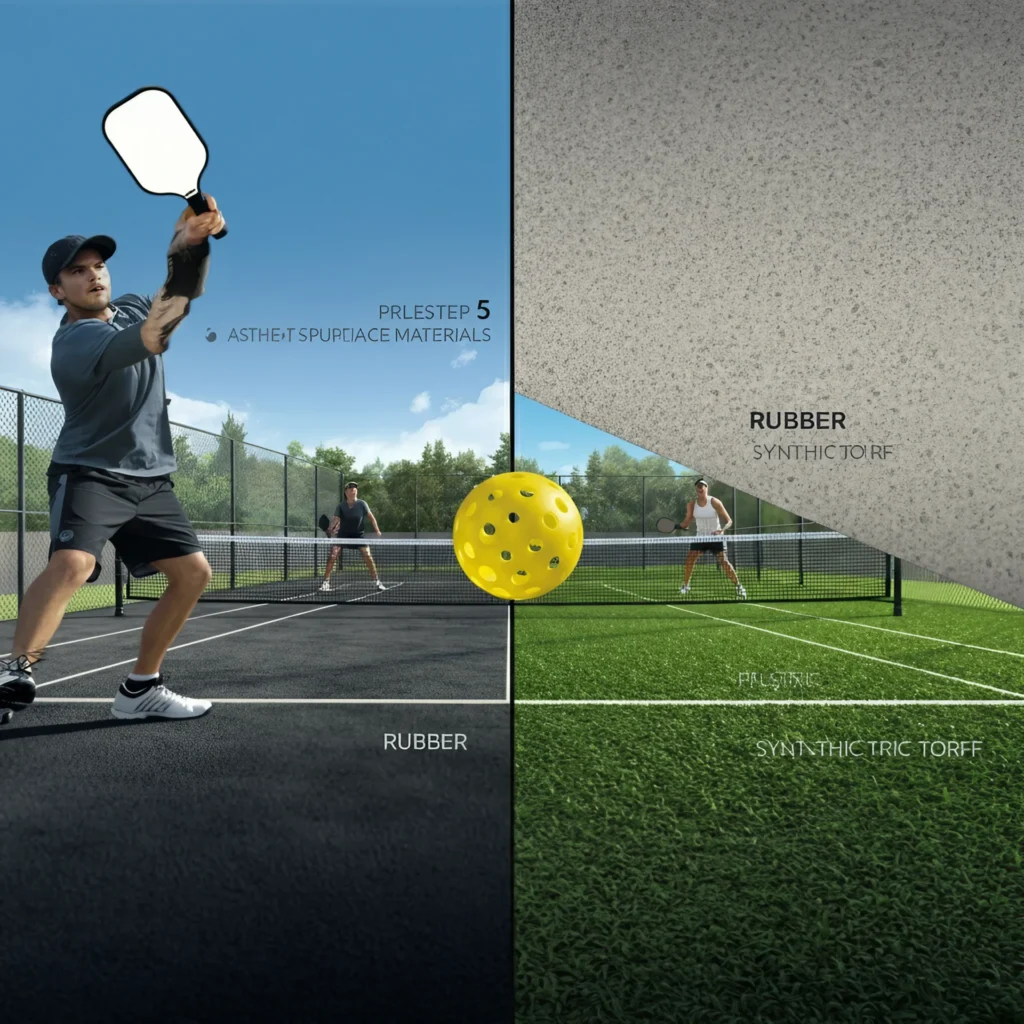
4. Rubber
Overview
Rubber surfaces, often made from recycled materials, are gaining popularity as environmentally friendly and player-focused court solutions. They are especially known for their safety and impact-absorbent properties.
Pros
- Shock Absorption: Rubber minimizes impact, creating a safer playing surface for players of all ages.
- Sustainability: Many rubber surfaces are crafted from recycled materials, making them an eco-friendly choice.
- Quiet Gameplay: Reduces noise from ball impact, which is beneficial for residential areas or indoor courts.
- Easy Installation: Rubber tiles or mat systems can be quickly installed by court builders or even DIY enthusiasts.
Cons
- Wear and Tear: Rubber may degrade faster in high-use areas, potentially requiring frequent replacements or repairs.
- Weather Limitations: Extended exposure to direct sunlight may cause some rubber surfaces to fade or harden.
- Cost: Comparable to modular tiles, rubber surfaces can carry a higher initial price.
Best For
Indoor courts, community centers, or locations in noise-sensitive areas.
5. Synthetic Turf
Overview
Synthetic turf is a premium option commonly considered for multi-sport facilities or outdoor pickleball courts offering a unique aesthetic experience. Built for versatility, it enhances play across various sports.
Pros
- Versatile Application: Excellent for multi-purpose surfaces where pickleball plays alongside other sports.
- Player Safety: Provides a softer surface, significantly reducing joint stress and injury risks.
- Aesthetic Appeal: Visually appealing with a premium look that enhances the overall facility design.
- Durable in Diverse Weather: Built to withstand heavy foot traffic and weather fluctuations.
Cons
- High Maintenance: Synthetic turf requires regular cleaning and grooming to maintain optimal conditions.
- Expensive: Installation and upkeep costs are higher than most other materials.
- Gameplay Differences: The surface may slightly change ball bounce and speed, requiring player adjustment.
Best For
High-end facilities or multi-use sports centers seeking premium aesthetics.

Environmental and Sustainability Factors
When choosing a pickleball court surface, environmental considerations are increasingly important. Rubber and modular plastic tiles often take the lead in sustainability by incorporating recycled and recyclable materials. Synthetic turf also aligns with green initiatives when paired with eco-friendly infill options.
It’s worth considering certifications such as LEED (Leadership in Energy and Environmental Design) to ensure your court meets sustainability benchmarks. These choices not only reduce the carbon footprint of your facility but also align with consumer demand for environmentally conscious solutions.
Practical Tips for Choosing the Right Pickleball Surface
Selecting the ideal material involves balancing gameplay preferences, climate requirements, and budget constraints. Below are some key tips:
- Local Climate Matters: For areas with extreme temperatures, weather-resistant options like concrete or synthetic turf are practical.
- Budget-Friendly Solutions: Asphalt and modular tiles are cost-effective choices for short-term or DIY projects.
- Long-Term Investments: Consider materials like concrete or synthetic turf for professional-grade courts and facilities.
- Test Before You Commit: If possible, try playing on different surfaces to assess bounce, traction, and comfort firsthand.
By keeping these considerations in mind, you can find a surface material that best suits your specific needs.
Pick the Best Surface for Your Pickleball Court
The right pickleball playing surface makes a significant difference in gameplay, player satisfaction, and long-term maintenance costs. While asphalt and concrete dominate outdoor courts, modular tiles, rubber, and synthetic turf are gaining traction for their unique benefits. Whether you’re a facility manager or a DIY builder, considering the factors outlined in this guide will help ensure a durable and performance-optimized court.
For a customized consultation on choosing or installing premium pickleball court surfaces, contact us today. We’ll guide you from start to finish to make your court a standout success.


